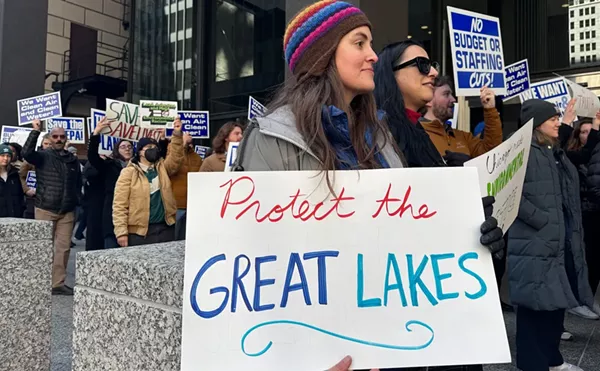“I make no allegations about the safety or lack of safety of the bridge,” says U.S. Rep. John Dingell (D-Dearborn), who today released the 700-page report to media and promised to post its executive summary on his website within a few days. “One of the reasons I’m releasing this is so that smarter people than John Dingell can look at it and arrive at better and informed judgments.”
In February, the congressman filed a Freedom of Information Act request seeking the report from the federal government. The bridge’s owner, the Detroit International Bridge Co., fought the report’s release until yesterday, when U.S. District Judge Patrick Duggan denied the company’s motion to block the disclosure.
The company claimed release of the report would both provide proprietary information to its competitors and pose a security risk.
“The public interest in knowing the conditions of bridge exceeds any potential security risk in releasing bridge inspection information,” Dingell says.
Duggan agreed with Dingell, ruling that the public’s right to know the condition of the bridge outweighed the bridge company’s fears.
What exactly those security fears are hasn’t been addressed. In fact, the report itself recommends the bridge company “consider a security assessment study for the bridge to primarily identify any existing component vulnerabilities and to develop countermeasures as needed for the vulnerabilities in conjunction with existing security measures.”
That’s particularly interesting, because, since 2001, the bridge company has been using national security concerns to justify its actions, including sealing off part of the city-owned Riverside Park adjacent to the bridge. As of 2007, according to this inspection report, a security assessment had not been done.
Bridge company officials did not immediately return telephone calls to Metro Times.
The report itself contains both 2005 and 2007 inspection information collected by a Pennsylvania construction engineering firm at the behest of DIBC. The report was given to state and federal governmental departments. But the state of Michigan had agreed to a bridge company request to exempt the report from being publicly disclosed.
Dingell, however, got the report from the Federal Highway Administration, and says he also is seeking the 2008 and 2009 inspections, which he also intends to make publicly available.
One thing that remains to be determined is what experts who review the report will have to say about the bridge company’s claims that the new bridge it wants to build adjacent to the Ambassador is necessary because of the deteriorated condition of the existing span.
The report released today contains descriptions of some needed repairs: deficiencies in main cables, cracks in paint, lack of caulking, exposed reinforcing steel and unsound concrete, for example. Some of the repairs have been made or were scheduled to be, the report notes. Dingell points out none of the issues has caused federal officials to shut the bridge for safety precautions.
Another question will be whether the company is doing all it can to preserve the existing bridge, or if it is intentionally letting the bridge, first opened to traffic in 1929, fall into disrepair in an attempt to help justify building the new, larger bridge it wants.






